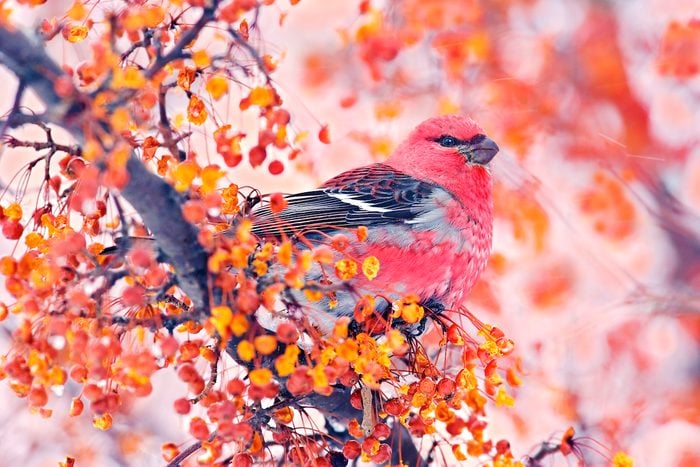
Types of Winter Finches
Winter finches drift from late fall to early spring in irregular movements, termed irruptive migration. This means any backyard has the potential to host flocks of rare visitors throughout the season. Although some birds are largely found in higher elevations, most of them are boreal specialists. Years with poor berry and seed production drive these unpredictable shifts, and these finch species seek out bumper crops in areas with richer offerings. Here are seven types of finches you might see in your yard when the weather turns cold.
Meet the rosy finch — and learn the best place to see one.
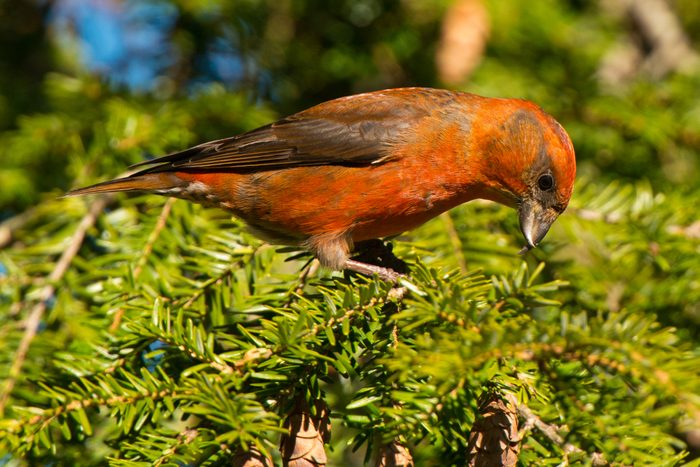
Red Crossbill
Crossbills are some of North America’s most specialized birds. Their beaks are offset, giving them the ability to extract seeds from spruce, pine, Douglas fir and other conifer cones. Crossbill irruptions aren’t limited to winter—the species can breed in any season, so flocks are highly nomadic in search of food. There are multiple types of red crossbills, each with a unique call and a varying bill size. Landscapes with plenty of conifers do the trick for crossbills. Like many other winter finches, they also feast on sunflower seeds at feeders.
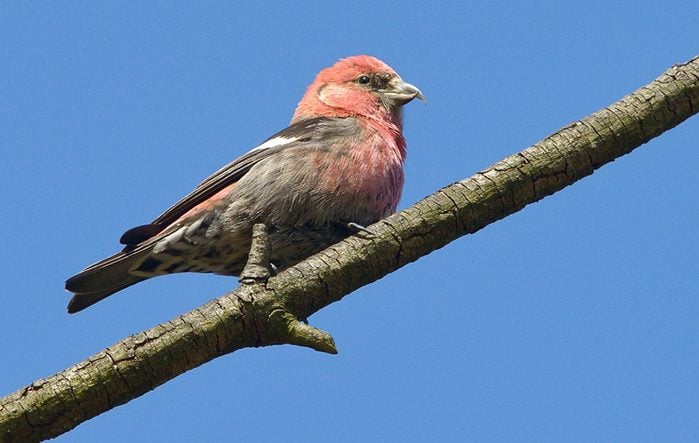
White-Winged Crossbill
White-wingeds look similar to red crossbills. Among this unique species, the red birds are male, while females and young birds are both tinged greenish. White-winged crossbills have a more restricted distribution, especially in the western parts of their range. During irruptive seasons, the species shows up across the Great Plains and throughout the Mid-Atlantic states. Thanks to an abundance of tree plantings, cemeteries are among the best spots to find crossbills. White-winged crossbills will occasionally use feeders and are sometimes seen eating grit along roadsides.
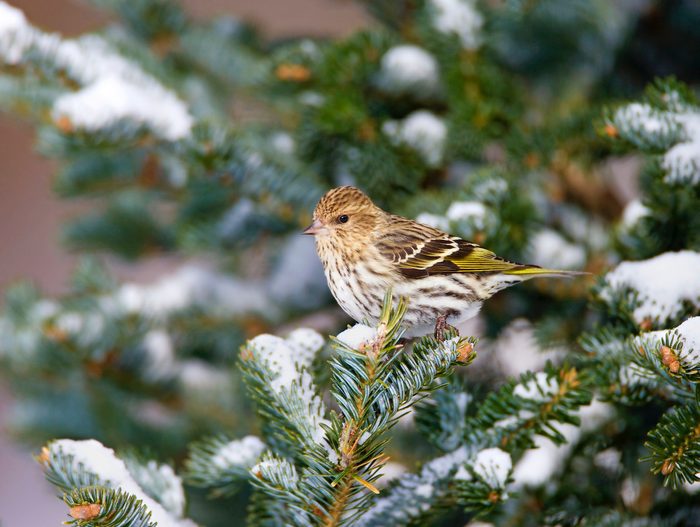
Pine Siskin
Ascending zipper calls and the near-constant wheezy chatter of pine siskins reveal when these striped fliers are in your neighborhood. The thin-billed birds often gather with flocks of goldfinches on thistle socks; sunflower chips in a tube feeder are another pine siskin favorite. Distinguish male and female siskins from female house finches by looking for flashes of vibrant yellow in their wings and tails. Siskins breed in forests, but they visit more open habitats during winter.
Pine siskin vs goldfinch: Here’s how to tell the difference.
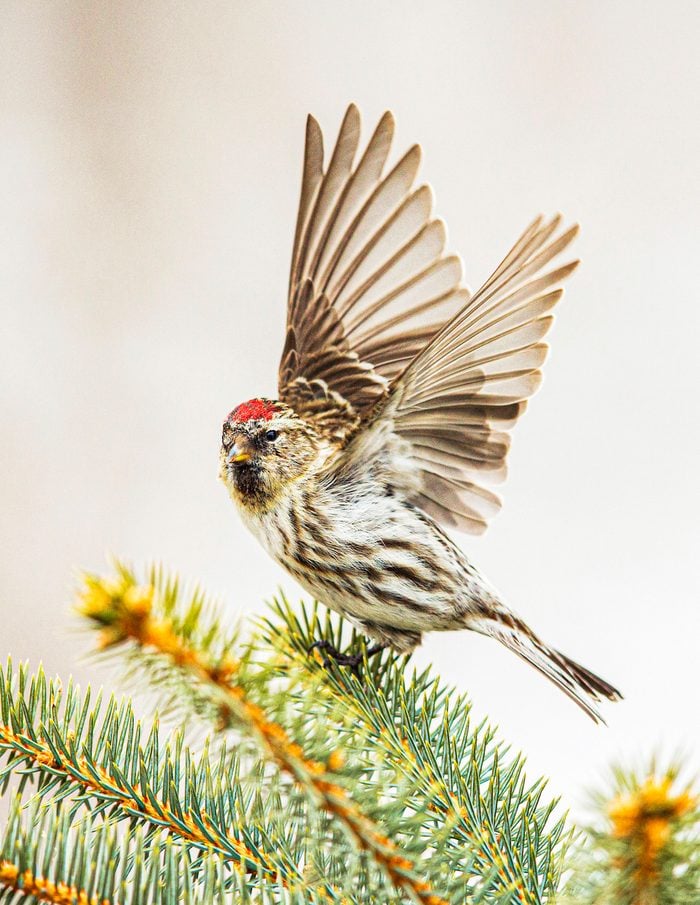
Common Redpoll
Few people south of Canada get to see redpolls, which nest in the far north. The energetic birds have a unique way of staying warm: They bury themselves in snow tunnels for insulation. Their typical winter ranges barely reach the U.S., but in good irruption years, flocks of common redpolls push far to the south. Although they prefer birch seeds, they readily visit thistle feeders if the natural birch crop is poor. Individual hoary redpolls, an even frostier version of the common redpoll, are occasionally spotted within flocks of commons.
Learn how to attract more goldfinches to your backyard.
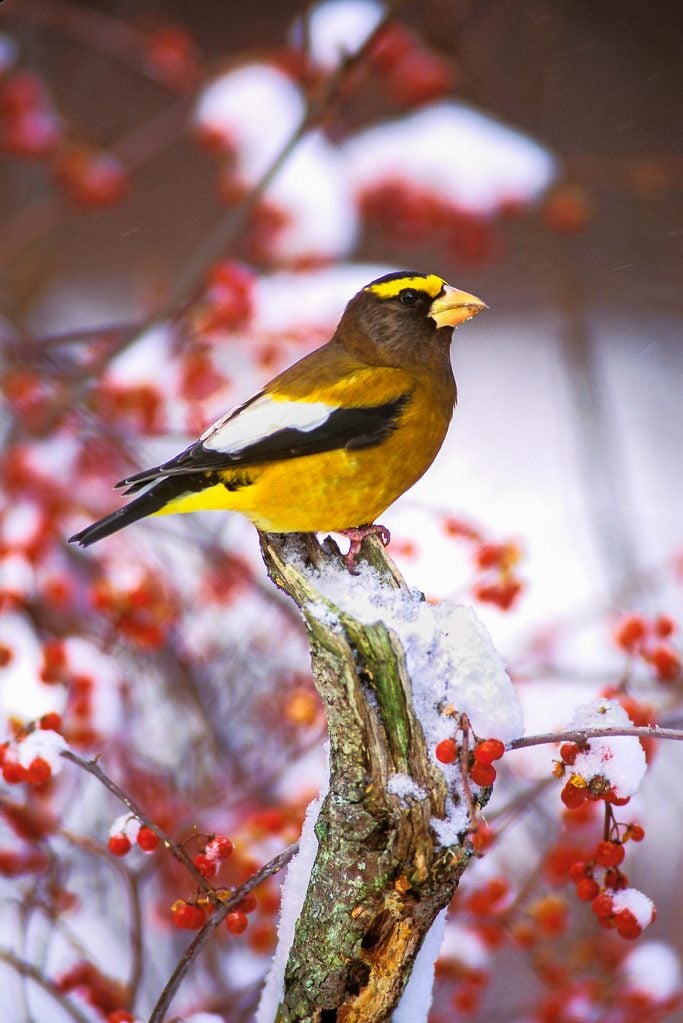
Evening Grosbeak
A hefty robin-sized bird, the evening grosbeak has a massive bill for cracking seeds and nuts. In the early 1900s, the range of the species expanded eastward, perhaps in response to more decorative seed and fruit trees being planted. Populations have been declining more recently, so it’s increasingly difficult to find this striking species. Males are yellow with black and white wings; females sport more subtle patterns. Sunflower seeds are a treat, and if you’re lucky, a large flock may visit your platform feeder.
Check out 5 types of grosbeaks backyard birders should know.
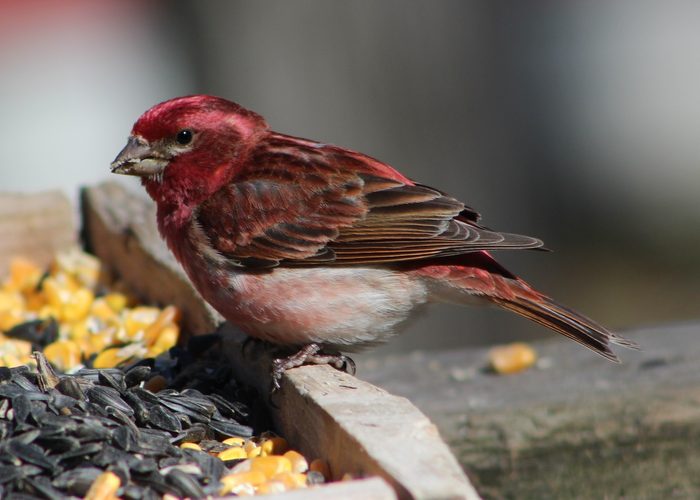
Purple Finch
Look for purple finches to show up at the same backyard feeders that attract house and Cassin’s finches. Purples tend to blend in with the more common birds, but watch for the rich raspberry red of the males and the coarse streaking of the females. This finch bird species is found throughout the year in the West Coast states, in New England and on the spine of the Appalachian Mountains. In winter they can descend anywhere in the country. Sunflower seeds in tube feeders are enough to please these and other types of winter finches.
House finches vs purple finches: Find out how to tell the difference.
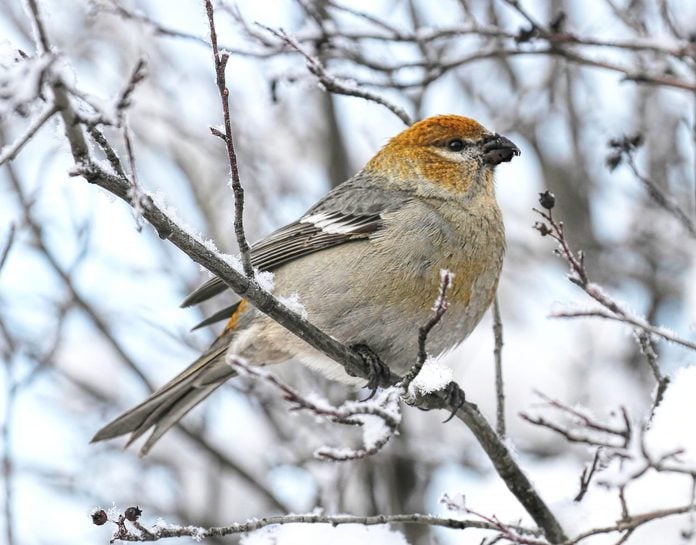
Pine Grosbeak
Pine grosbeaks are found year-round from Alaska to eastern Canada and Maine, and isolated populations live in western mountains, as far south as northern New Mexico. Males are a flashy blush pink, while females and immature birds show a yellowish wash. Pine grosbeaks eat at sunflower feeding stations, especially platforms and hoppers. Shrubs full of berries and crabapples also attract this species.
Next, check out 20 super pretty pictures of finches.
